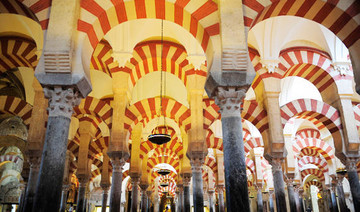LONDON: The Great Mosque of Córdoba is under threat due to the heavy stresses caused by tourists.
The mosque, one of the world’s most celebrated Islamic monuments, is struggling with the condensation caused by its millions of annual visitors.
The danger to the building was exposed in a report submitted to the government this week, which found that condensation has damaged several of its key areas.
Condensation has damaged its iconic mihrab, which showed the direction of Makkah and provided a chamber for directing prayers.
The mosque, which receives up to 2 million annual visitors, was built between the eighth and 10th centuries.
“This is caused by the special architectural configuration of the spaces and their insufficient ventilation,” said the report.
Body heat emitted by tourists is causing the damage, it said, adding: “This evaporation causes the disintegration of these materials and contributes to their rapid deterioration.”
The building already struggles seasonally due to Córdoba’s status as the hottest city on the Iberian Peninsula, reaching temperatures of almost 47 degrees Celsius.
“When the moment of greatest evaporation converges with the moment of greatest influx of tourists, it has been verified empirically how the absolute humidity indices of the environment rise very noticeably, which poses a risk to the conservation of the materials most sensitive to moisture,” said the report. These include wood, which is a major part of the building’s materials.
The report recommended that it was “fundamental to implement all measures that improve the ventilation of the building and . . . to control the flows of visitors, avoiding agglomerations and spreading them out during visiting hours.”














